The first weekend of the Nations Cup has been completed. With commiserations to France and Fiji, who succumbed after a Covid-19 outbreak brought the game in Paris to a halt.
On Friday night, Celtic rivalries were resumed and a handsome Irish victory left a dejected, out-of-form Wales to lick wounds. While the game’s biggest story was happening 12,000 miles away in Canberra with Argentina humbling the All Blacks for the first time ever, Scotland duked it out with Italy in an entertaining game which saw a fifth win on the spin for Gregor Townsend’s men and no shame for a willing Italy. The last joust came at a sodden Twickenham, where England carved out a rudimentary, muscular win over willing but limited Georgian side. Here’s what The XV made of the action.
England
If Eddie Jones had started hitting tennis balls for his players to catch and throw back in between rucks, it wouldn’t have felt out of place. Neither would it have been strange had England played with a squishy white brick in the second half, as Jones is fond of using at England training sessions.
To watch England play with no fans at Twickenham, against a Georgian team conforming to stereotype, gave England’s first match of the Autumn Nations Cup the feel of a measured training game, where the opposition had been asked to simulate a certain style of play, and England were only allowed to score through Jamie George.
The giveaway for this fallacy was the intensity. Georgia and England were all in. Both sets of players will carry physical reminders of this encounter deep into next week, especially Georgia’s captain and inside-centre Merab Sharikadze, who rode a soul-shuddering hit from Billy Vunipola in the first half. You fancy Sharikadze might have appreciated it. It was a sign his side were being taken seriously.
When Georgia trained with England two years ago, Jones labelled them at the time “the biggest, ugliest, strongest scrum pack in the world.” So he must have experienced at least moderate satisfaction at England’s control in that area for much of the game.
Not that it came easily for those at the biting point. Will Stuart, in his first England start, was put to the test by the 30-year-old Montpellier loosehead Mikheil Naraashvili – who muscled a penalty out of the Bath prop in the first half – but came through with his reputation enhanced. Ellis Genge did too, in his battle with Toulon prop Beka Gigashvili.
At the lineout, however, England were a cut above. Charlie Ewels and Maro Itoje won’t have had many easier days in the air. And once they were on the ground, the maul rolled with futile resistance. England were comfortably beating Georgia up front, and didn’t venture too far from the scripted plan.
With the narrative not veering too far off-piste, the field of study for individual performances is narrow. But debutants Ollie Lawrence and Jack Willis should come in for mention. They both carried their Premiership form seamlessly onto the international stage.
Worcester’s Lawrence in fact looked the more experienced of England’s centres as he bailed out Henry Slade’s miscued pass early on with the calmness of an unflappable veteran. He then hurtled onto a short ball close to Georgia’s line with tones of Manu Tuilagi. Notwithstanding George’s historic hat-trick – a first for an England hooker in a Test match – it was Willis who bagged the best memento of the day, a debut try, and the first of the match. His overall performance was so good that Jones had seen enough of him after 46 minutes. Ticks next to his name you can be sure of – he seems destined to be involved with England in the Jones era, and well beyond.
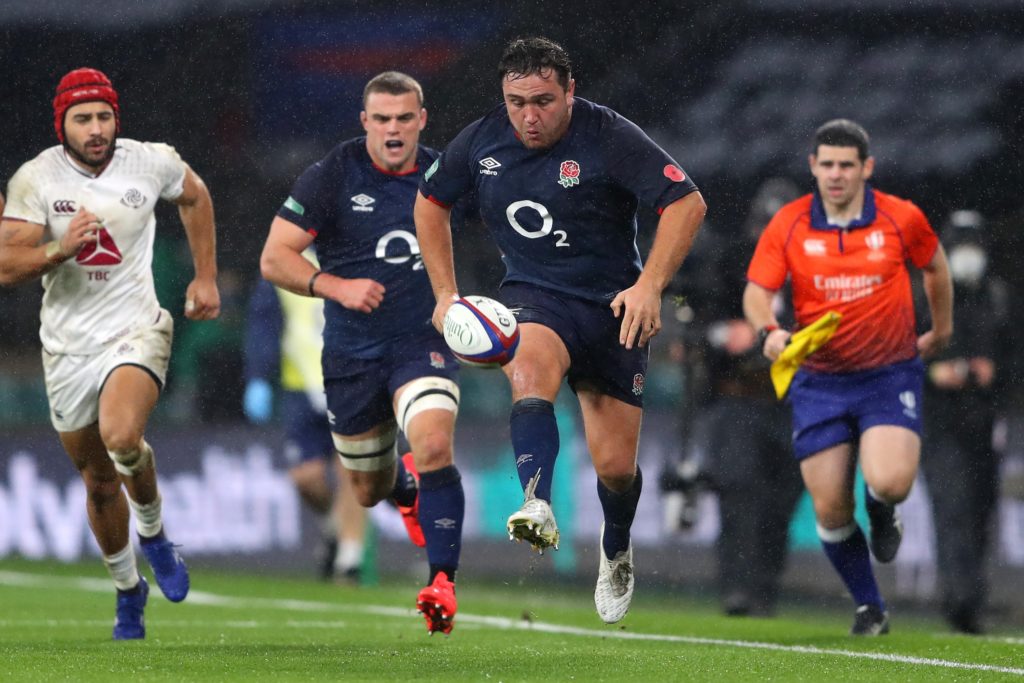
Star man: Jack Willis
Jamie George will have gone home with the match ball but Willis, in only 46 minutes, showed he has all the tools to handle Test rugby. He is perfectly suited to a game where the breakdown is so intrinsic to success and failure and while he will have sterner tests, Eddie Jones should acknowledge his gifts.
Georgia
It may prove to be a moment of neat sporting symmetry that on the day Argentina announced they have no nations left to conquer by beating the All Blacks in Sydney, Georgia took their first steps in a Tier 1 competition outside of a Rugby World Cup.
The equivalent moment for Argentina came in Cape Town in 2012, when they played their first ever match in the Rugby Championship, losing to South Africa 27–6 at Newlands.
The situation is very different for Georgia, of course. The Autumn Nations Cup will likely be a one-off affair. These next three weeks could, therefore, be the only three weeks Georgia have of back-to-back matches against Tier 1 nations for another decade. Even at a Rugby World Cup you aren’t guaranteed four games in a row against Tier 1 opposition.
With that gloomy possibility, Georgia want to suck up every last morsel of playing experience in this competition, and they did that against England..
Captain Sharikadze was keen to stress after the match how much pressure his team were put under by England, but not as a way of excusing defeat; he seemed to be saying thank you. Only under extreme pressure, will Georgian diamonds be formed.
With limited opportunities to attack at Twickenham, it was in defence where Georgia showed up best. Their fringe defence needs much attention – tries by Willis and Dan Robson were testament to that – but in the loose and in the backfield they harried, scrambled and got numbers when their defence was stressed that prevented further scores. Right winger Akaki Tabutsadze was up to the task of shutting down opposite number Jonny May on most occasions, whilst outside centre Giorgi Kveseladze marshalled his defence and brought good line speed whenever England dithered. Openside flanker Giorgi Tkhilaishvili and No 8 Beka Gorgadze also showed their zeal for confrontation.
With the little ball they did have, scrum-half Gela Aprasidze looked spritely. Save for one kamikaze pass, he has a zip to his delivery and once or twice – no more than that – showed a glimpse of the footwork that made him such a star of the U20s World Championship in 2017.
The 22-year-old was partnered with a 21-year-old fly-half in Brive’s Tedo Abzhandadze and the pair are capable of much more in attack than they showed against England. The next three weeks could dish out tough lessons for Georgia, but they wouldn’t want it any other way.
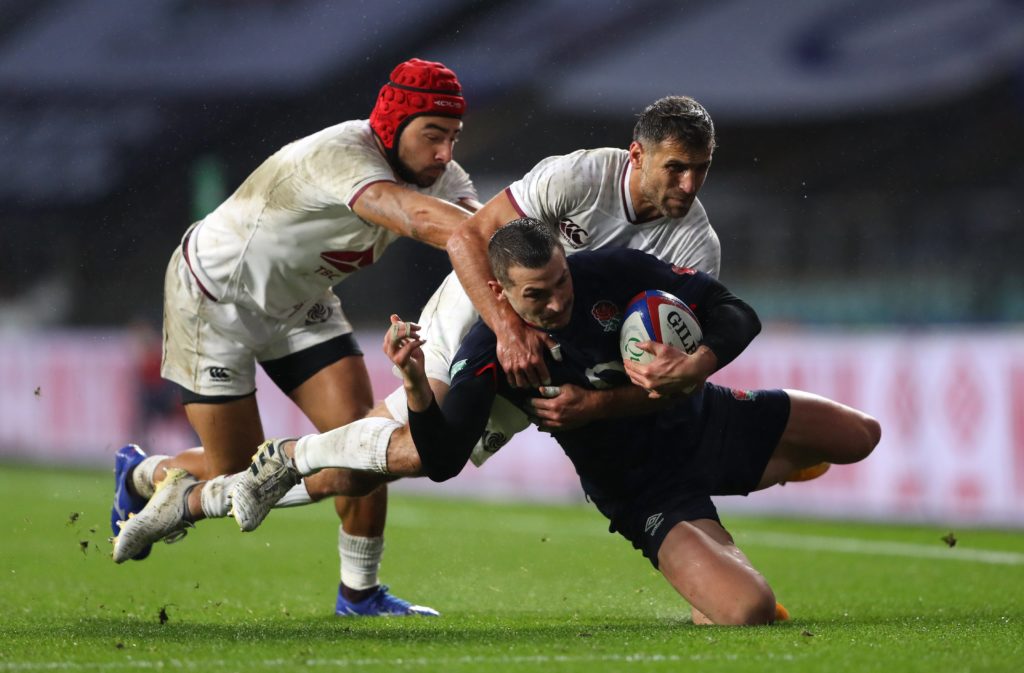
Star man: Gela Aprasidze
The pint-sized scrum-half was a nimble presence around the fringes and didn’t lack willing in the physical exchanges as he pushed and probed with a dart through heavy traffic. A crowd-pleaser who should be able to carve out a steady professional career.
Ireland
After the public inquests of the humbling by a rejuvenated France, mutterings about Andy Farrell’s suitability at Ireland’s head coach subsided. The common thinking would have been, ‘well, we’re not perfect’, but thank God we’re not in the mess Wales are in.
That Ireland managed to carve out a comfortable win by having to use three out-halves was damning to Wales. Jonny Sexton felt a tight hamstring and departed grimacing not scowling from the field of play. His replacement Billy Burns pulled the strings adeptly before departing the field with a head knock, before Conor Murray took a little French inspiration and did a more than passable job at fly-half, nailing three kicks and looking untroubled.
Much of the attention focused on James Lowe’s debut and only a curmudgeon would deny he’d made a positive impression. His running battle with Liam Williams told you how much his Lions adversary respected him and Lowe kept the Welsh defence honest, emerging with a smile as wide as the Liffey when crashing over at the final whistle. The powerful New Zealander looks set to win many more caps for Ireland. Andrew Conway didn’t disappoint, either, showing his aerial prowess and offering himself a as willing runner.
Of the emerging talent, it was Caelan Doris who took another step in his development to become a first-choice pick at the base of the scrum. His charge-down and invention to throw the ball between his legs, nearly creating a try fo Conway, showed his mind is tuned in to Test Match frequency. James Ryan took the captain’s armband and looks set to partner Maro Itoje in the Lions engine room, while Peter O’Mahony showed he wasn’t going to be cowed by Alun Wyn Jones’ early handbags.
The continued omission of John Cooney was explained by the whip-smart distribution of Jamison Gibson-Park who looked the part at scrum-half. The performance wasn’t perfect, Ireland left a few tries out on the field, where more composure would have seen them pass 40 points, but with Bundee Aki and CJ Stander rested for the trip to Twickenham, we should find out more about their top-class aspirations soon enough.
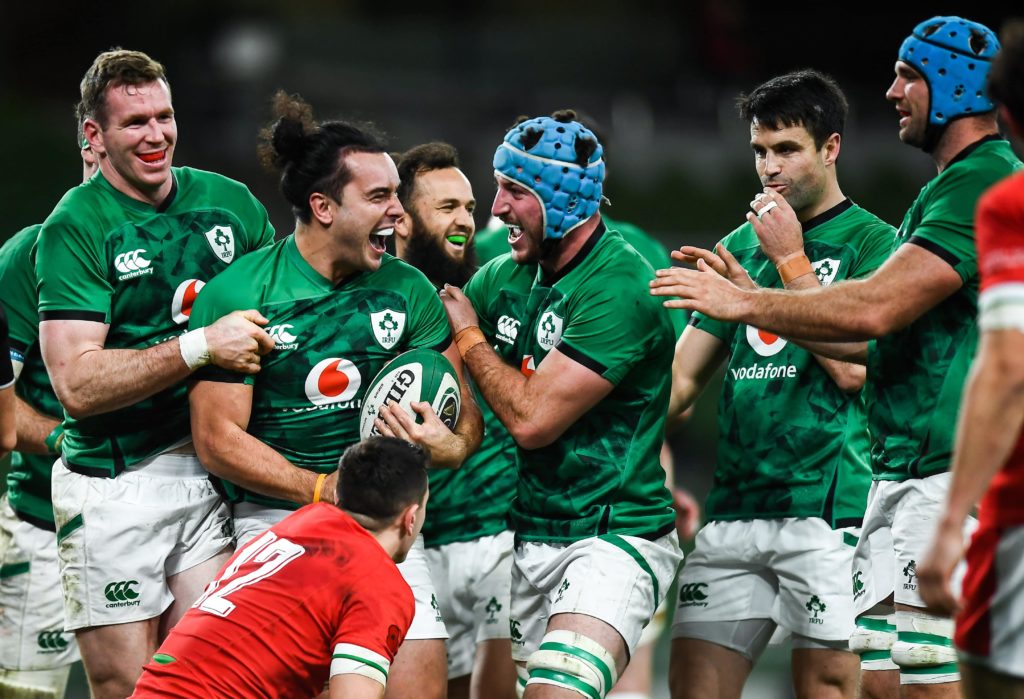
Star man: James Lowe
Lowe has been used to being labelled, ‘the next big thing’ in Ireland for years after his eye-catching exertions for Leinster and he didn’t disappoint. His body language was instructive. He didn’t look fazed to be on the Test stage and offered himself as a willing runner time after time. The muscular No 11, will more than hold his own on the highest stage.
Wales
This was a sixth straight defeat for Wales and by the heaviest margin. A 19pt deficit was a fair reflection of a match in which Wayne Pivac’s men barely flustered Ireland in the red zone, only flickering in the third quarter by putting some phases together. As with the defeat to Scotland 14 days previously, Wales were undone by a shaky set-piece.
Wales lost four of their five lineouts, a feat they had only managed on one occasion in the previous 64 Tests. The penalty count was also damning. After the 16 penalties conceded against Scotland, there was 18 against, Ireland, again a ‘feat’ only matched once in the decade. Warren Gatland once said his side would be lucky to win if the penalty count slipped into double-figures and it is something Wales have to address at warp speed with England on the horizon.
At the scrum Pivac made the wrong call in selecting an out-of-sorts Rhys Carre at loosehead to face the powerful Andrew Porter. Carre is only 22 and will come again but being replaced before half-time will undoubtedly knock his confidence. In the pack, only the backrow emerged in credit, with Taulupe Faletau putting in an improved performance and Shane Lewis-Hughes again tackling himself to standstill with 19.
The backline was also devoid of inspiration. Gareth Davies looked a pale imitation of the World Cup star he was 12 months ago, getting charged down and failing to find a crucial touch. There was a lack of creativity in midfield, which is unsurprising given Owen Watkin and Jonathan Davies have both played very little rugby in the last 12 months and lack match sharpness, while Liam Williams, for all his sparky, narky edge, is feeling his way back and is best suited at 15.
You see the problem for Wales is eight games into Pivac’s tenure, there doesn’t seem to be a clear identity to Wales’ play. His famed width and offloading game that he instilled into the Scarlets just isn’t being replicated, so in the next three or four months, it could be a case of changing the players, or changing the coach. A side that sat at No 1 in the World Rankings has now slipped to ninth with largely the same set of players. It is night on impossible to dress that up positively.
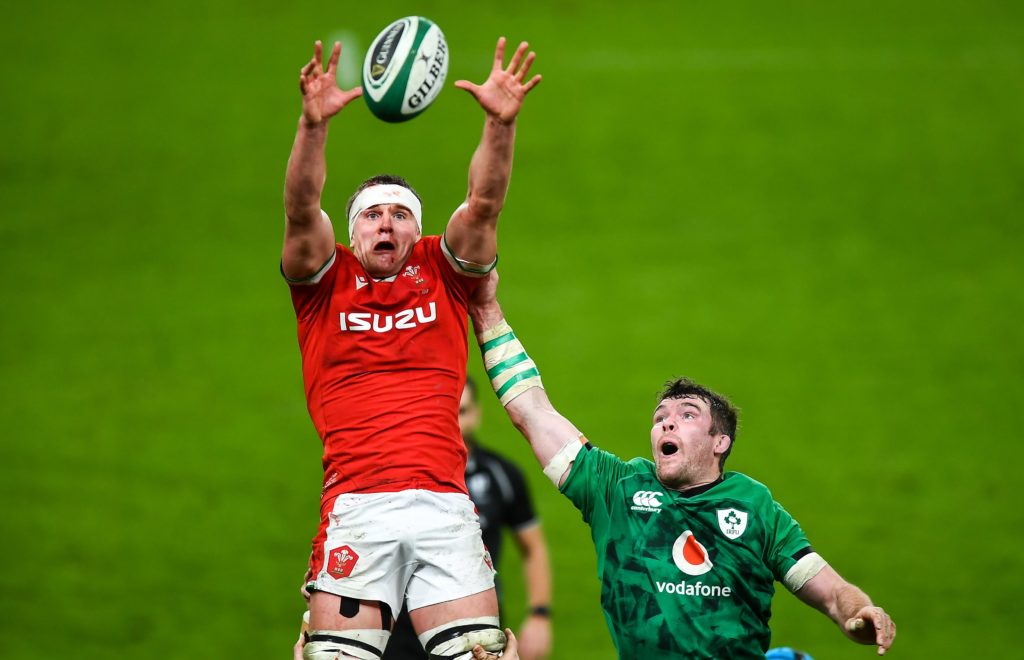
Star man: Shane Lewis-Hughes
There was nothing remotely ‘Hollywood’ about Lewis-Hughes’ performance. It was one of grit and endeavour but the Rhondda boy gives his all in a Wales shirt. A willing jumper in the lineout, a carrier in the tight and tackling machine (he’s made 45 tackles in his two games for Wales), he also has the physical dimensions to make a nuisance of himself.
Italy
How long have we been waiting for Italy to join the party? How many fleeting performances have we witnessed, only to be followed by spirit-crushing sprees of darkness?
It is presumptuous to herald a single gallant loss to Scotland as an Italian renaissance, particularly after their pallid Six Nations, but the fare in Florence was encouraging.
At last, whisper it, Italy are developing a brood of young players with the fortitude and skill-sets to effect lasting change.
Their callow tight five had the measure of Scotland’s heavies for much of the contest. Loose-head prop Danilo Fischetti and lock Niccolo Cannone, both just 22, were terrific. Jake Polledri was quieter than usual but he will be the totem around which Franco Smith builds his pack in the coming years. Indeed, the sight of Polledri being carted from the field on a stretcher would have brought Smith out in cold sweats.
Unflustered, strong-willed and talented at just 20, Paolo Garbisi was among the most composed performers. It would be premature, after three caps ,to anoint him as the heir to Diego Dominguez – an heir Italy have sought longer than King Arthur chased the Holy Grail – but the potential is there for all to see.
Outside him, deployed at 12, Carlo Canna was a steadying influence with attacking ballast and guile to know when to put boot to ball. Test rookies Marco Zanon, Jacopo Trulla and Federico Mori were explosive and fearless. Matteo Minozzi, the little Wasps ferret, finished a truly glorious try as four Azzurri backs carved Scotland open. The Italian bench made a telling impact too, particularly Johan Meyer in the close-quarter skirmishes.
For five years, Italy have gone without victory over a Six Nations opponent. One swallow does not make a summer. Defeat, no matter how rousing, is still defeat. But the green shoots are there for all to see. Smith has a firm foundation on which to build and grow this autumn.
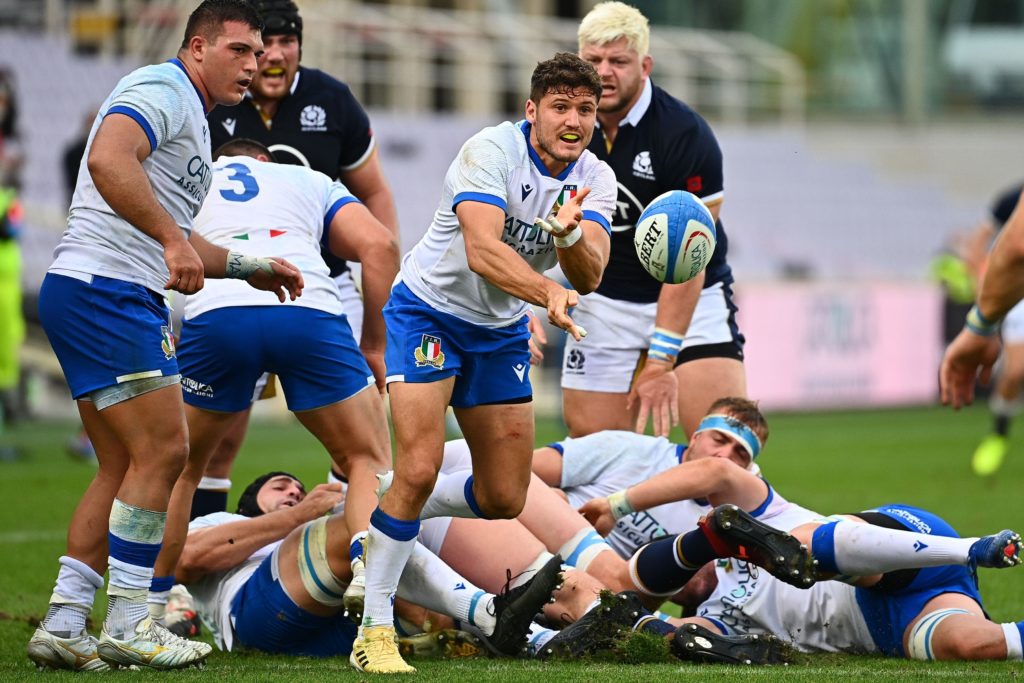
Star man: Danilo Fischetti
In a crowded field, Fischetti stood out as Italy’s premier performer. Not only did the loose-head scrummage fearsomely on just his third Test start, but he carried with aplomb and won two magnificent turnovers by latching his meaty frame over Scottish ball.
Scotland
They say that winning becomes a habit. The theory goes that the more a team triumphs, the better it deals with adversity and the more capable it becomes of hauling itself inexorably out of trouble.
In the face of Italy’s ferocious ball-carries and even more rambunctious celebration of every little win, the Scotland of old might have wilted.
Instead, they backed their system and their strengths and found a way to take command of the game. They went to their big carriers – Scott Cummings, in particular, was outstanding – plundered close-range tries and used the driving maul to subdue their spirited hosts.
There was no panic evident in their structure, no forcing of long-shot off-loads or miracle plays. Scotland did what Scotland are becoming highly adept at doing in 2020.
The half-backs, Ali Price and Duncan Weir, delivered assured performances. Price is no longer a raw, breaking scrum-half, adding nuance to his game. His box-kicking was very tidy. He sped things up when the time was right and fizzed a couple of neat passes for two of Scotland’s four tries.
Weir seized his opportunity in the absence of Finn Russell and Adam Hastings. The Worcester Warrior is known primarily as a dead-eye kicker, but he infused a strong tactical display with some lovely attacking flourishes. The number 10 jersey is in safe hands.
Scotland are regarded as a high-tempo, high-scoring team under Gregor Townsend, but their pragmatic and highly effective 2020 Six Nations yielded only seven tries. Bagging four in Florence was a pleasing return. Duhan van der Merwe scored his second in three Tests. The massive wing will become a huge strike weapon for Gregor Townsend and has clearly been instructed to sniff out openings away from his flank, scything through the Italian line on a nigh-unstoppable out-to-in vector.
That’s five wins on the bounce now for Scotland, their best return in nine years. Onwards, then, to their greatest test of the group, the visit of rampant France to Murrayfield, and a quest for six in six.
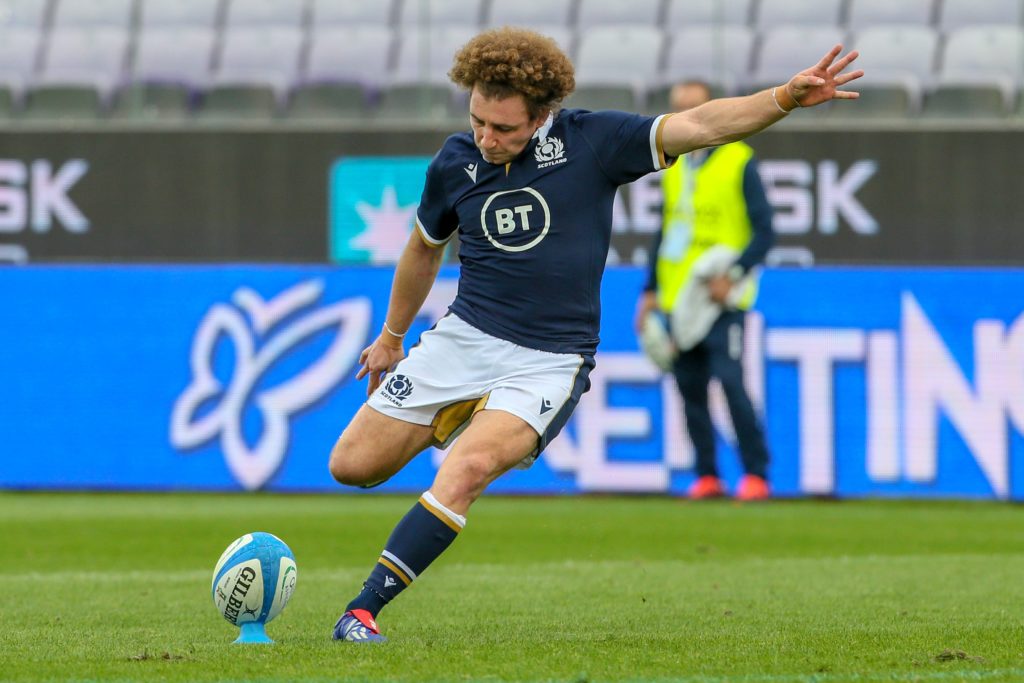
Star man: Duncan Weir
Van der Merwe’s running stats and relentless ability to scuttle defenders catch the eye, but Weir’s performance on his first Test start in over four years was compelling. The fly-half has clearly added gears to his game at Worcester, and is playing some of his best rugby.
If you’ve enjoyed this article, please share it with friends or on social media. We rely solely on new subscribers to fund high-quality journalism and appreciate you sharing this so we can continue to grow, produce more quality content and support our writers.



Comments
Join free and tell us what you really think!
Sign up for free